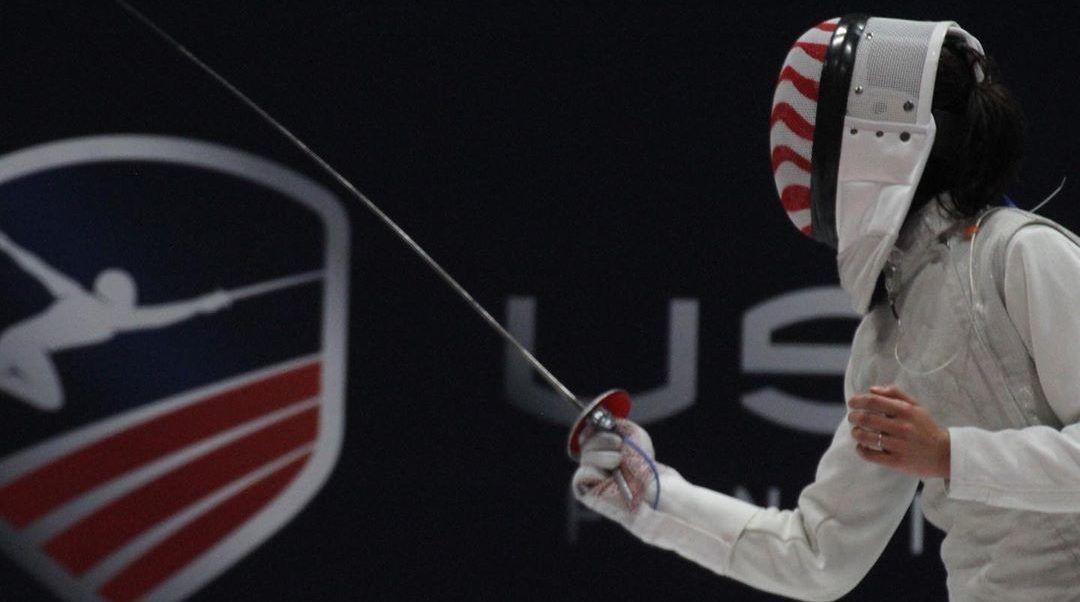USA Fencing will start implementing the newly adopted FIE-level non-combativity rules changes beginning this upcoming weekend at the Junior Olympics in Denver.
As noted in recent Fencing.net coverage, the Annual FIE Congress approved a number of rules changes. One of the changes includes a new way of handling non-combativity. This change has already been in effect internationally at Junior and Senior World Cup events and Grand Prix events.
As is standard USA Fencing policy, FIE rules changes that substantively impact the game are adopted, though sometimes USA Fencing takes a bit of time to roll them out at national and local events inside the country. As was officially announced via an email blast as well as a blog post in the Rules Committee blog, the upcoming Junior Olympics will be run using the new FIE non-combativity rules.
There is unwillingness to fight when there is one minute of fencing without a hit or without a hit scored off the target. When there is unwillingness to fight, the Referee will immediately call “Halt!”
Individual events – Direct Elimination
When there is one minute of unwillingness to fight, the Referee sanctions one or both fencers with a P-card as follows:
a. If the fencers are equal: the Referee sanctions both fencers with a P-card.
b. If the fencers are not equal: the Referee sanctions the fencer who has the lower score with a P-card.
P-card sanctions are as follows:
a. For a fencer’s first P-card sanction, the fencer receives a P-yellow card.
b. For a fencer’s second and third P-card sanction, the fencer receives a P-red card.
c. For a fencer’s fourth P-card sanction, the fencer receives a P-black card.
If the fencers are equal and receive P-black cards simultaneously, the fencer with the higher initial seeding wins the bout, as determined at the start of the competition.
Team events
When there is one minute of unwillingness to fight, the Referee sanctions one or both
teams with a P-card as follows:
a. If the teams’ scores are equal: the Referee sanctions both teams with a P-card.
b. If the teams’ scores are not equal: the Referee sanctions the team with the lower score with a P-card.
P-card sanctions are as follows:
a. For a team’s first P-card sanction, the team receives a P-yellow card.
b. For a team’s second and third P-card sanction, the team receives a P-red card.
c. For a team’s fourth P-card sanction, the team receives a P-black card.
When there is unwillingness to fight and a team has already received two P-red cards, that team receives a P-black card. In the case of a P-black card, the fencer currently on the strip is disqualified. However, the team may continue to fence in the current and subsequent matches by substituting their reserve fencer, if one is available, and provided a replacement has not already been made previously for tactical or medical reasons. If a replacement is made after receipt of a P-black card, no further replacement may be made, even for medical reasons. The disqualified fencer may not take part in any further matches during the competition; however, the P-Black Card is not transferred to any subsequent matches in which the team participates, and the disqualified fencer remains eligible for any awards the team may earn.
If no replacement can be made following receipt of a P-black card (because there is no reserve fencer or because the reserve fencer has already been used previously), the team sanctioned by a P-black card loses the match.
If the teams are equal and receive P-black cards simultaneously, the team with the higher initial seeding wins the match, as determined at the start of the competition.
Both Individual and Team Events:
a. The P-yellow (warning) and P-red (penalty hit) cards received during any one bout or match are valid only for that bout or match. These penalties are not transferable to the following bout or match.
b. The P-black card means disqualification for repeated unwillingness to fight. The fencer or team sanctioned keep their position in the ranking and the points obtained up to the moment of the disqualification.
c. The referee must record these P-yellow, P-red and P-black cards separately on the score sheet. The sanctions awarded for unwillingness to fight are not cumulative with any other sanction awarded.
d. In both individual and team competitions, if, at the end of the regulation time, there is equality of scores, articles t.40.3 and t.41.5 will apply.
The text of the new rules come from the Referee Committee Blog post on the new non-combativity rules, found here. Additionally, the blog post has a helpful FAQ section that we encourage everyone to read to help provide more clarity.
A few notes that are worth calling out directly:
- The only criteria for non-combativity now is exactly 1 minute of no lights on the box. Off-target lights count.
- It is now considered non-combativity and therefore a penalty if both fencers back off right before a period break (which is seemingly in conflict with the previous bullet point).
- Non-combativity now has a parallel penalty chart and card path called “P-Cards”. They do not intermix with other normal cards. In team events, a Black P-card will only disqualify the fencer on strip, not the whole team.
- In the case of non-combativity, if the score is equal, both fencers are P-carded. If the score is not equal, only the fencer with the lower score is P-carded.
- The clock/bouts no loner advance on a non-combativity penalty. You’re still fencing the full time.
So, the gist of the new rules changes are that if you are behind, forcing non-combativity is not in your best interest. This is a distinct tactical shift, specifically in epee. For those fencing at the upcoming Junior Olympics, not knowing that the rules will be different might result in quite an unexpected surprise.




